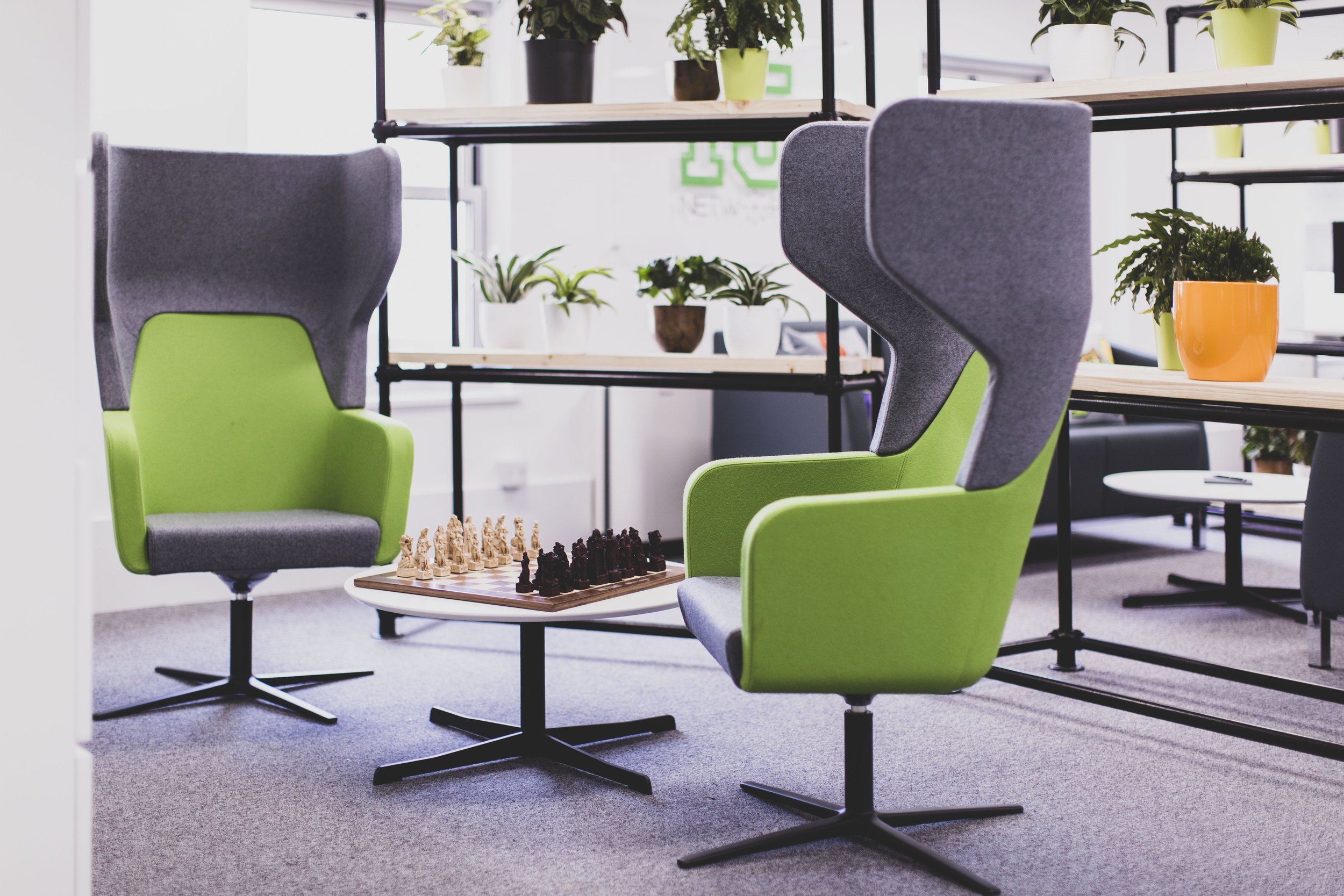Boosting Employee Well-being: Creating Healthier Work Environments
In today's dynamic business landscape, prioritising employee well-being stands as a paramount objective. Providing a compelling work environment holds immense potential in fostering well-being, productivity, and overall engagement among employees, thereby enhancing the company's reputation, staff retention, and recruitment efforts. But how can we create such an environment? Let's explore.
Understanding the Impact of the Workspace on Well-being
There has been a significant shift in how we think about well-being over the last decade. From considering work and life to be completely separate, and that health is simply a personal responsibility, to the realisation that well-being is holistic and impacted by all aspects of our lives.
In fact, the World Health Organization considers employment to be a “social determinant of health”—something so important that it shapes our well-being at a deep level. In addition, a 2022 study by Deloitte into workforce well-being found that 57% of employees and 70% of executives are considering quitting their job for one that better supports their well-being.
Inevitably, the physical environment in which we work can have a significant impact on our health and well-being. A poorly designed workspace can lead to physical discomfort, stress and significant health problems over time. On the other hand, a well-designed workspace can enhance physical and mental comfort, reduce stress and promote greater well-being.
Factors such as natural light, indoor air quality, noise levels and ergonomic design can significantly affect employees' health and well-being. For example, exposure to natural light during the workday can improve sleep quality, mood and productivity. Similarly, good indoor air quality can reduce the risk of health problems such as headaches, fatigue and respiratory issues.
Culture and the Work Environment
Creating a healthier work environment also includes considering the organisational culture, leadership, work practices and policies that can impact employee well-being.
For instance, encouraging regular breaks can help employees relax and recharge, reducing stress and boosting productivity. Similarly, fostering a culture of open communication and support can contribute to better mental and emotional well-being.
Hereto, the design and layout of the workspace plays a crucial role. As example, spaces that promote collaboration help improve social interactions and relationships at work; quiet areas provide a place for focus and concentration, and, ergonomic or active furniture and equipment can help prevent physical discomfort and injury.
The Role of Nature in Boosting Well-being
Incorporating elements of nature into the workspace, a concept known as biophilic design, can have significant benefits. This approach is based on the idea that humans have an innate desire to connect with nature, and this connection can have positive effects on our mood, health and well-being.
Biophilic design can include a variety of features, such as indoor plants, natural light, views of the outdoors, and the use of natural materials in interior design. For example, indoor plants can improve air quality by absorbing pollutants and releasing oxygen. Natural light can regulate our body's circadian rhythms, improving sleep quality and mood. Views of the outdoors can provide a sense of calm and reduce stress.
In a study published in the Journal of Environmental Psychology, employees who worked in environments with natural elements reported a 15% higher level of well-being, a 6% higher level of productivity, and a 15% higher level of creativity compared to employees who worked in environments without these elements.
Promoting Physical Activity and Healthy Habits
Promoting physical activity and healthy habits can reduce the risk of many health problems, including heart disease, diabetes and depression, as well as improving mood, stress and sleep quality.
There are many ways to promote physical activity in the workplace. These can range from providing facilities for exercise, such as a gym, to bicycle storage or changing facilities and lockers, to encouraging employees to use the stairs or to take walking meetings and activity-based breaks during the day. Multi-function rooms, with flexible furniture options, can also offer the convenience for yoga or meditation to take place at work.
Healthy eating is another important aspect. This can include providing free fruit or other healthy snacks or a well-equipped kitchen or cafeteria that can educate and encourage employees to access and eat a balanced diet. Furthermore, eating lunch at our desks is bad for digestion and nutrient absorption, and overall can have a negative impact on productivity. Hence, creating spaces that encourage people to take a break, and to eat and relax during the day can be crucial.
Boosting Employee Well-being in Guernsey & Jersey
In Guernsey and Jersey, we are blessed with an amazing natural environment and short commutes that should allow us all to benefit from the importance of a healthy life-work balance. However, it is still important to invest in providing a healthy work environment, that supports our innate desire for social interaction and that can boost our overall wellbeing, engagement and productivity.
Creating such a workspace requires a deep understanding of the specific needs and preferences of the business and its employees. POS’s Workplace Consultancy services can provide valuable insights and guidance, and can help you to create an environment that meets your operational needs and boosts the well-being of your employees. Learn more.
If you're interested in learning more about how to boost employee well-being in your workspace, please get in touch with us. We'd be delighted to discuss your needs and explore how we can support you.










